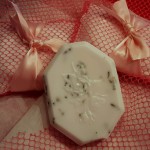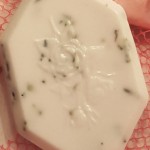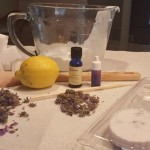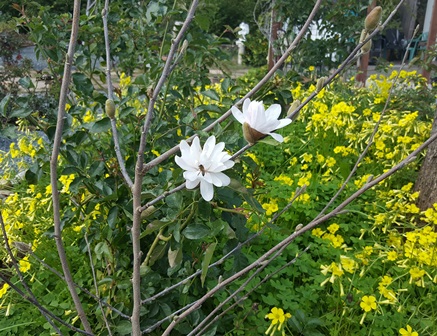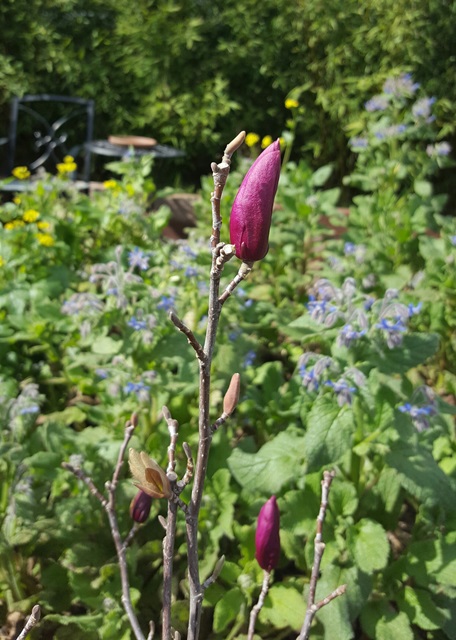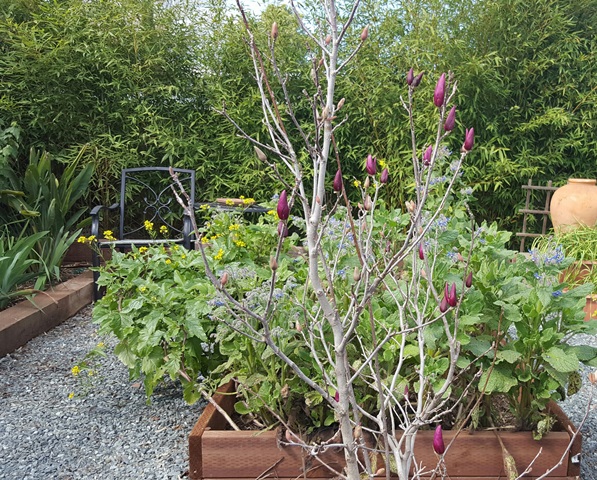Making Homemade Soap in Under an Hour
My grandmother grew up on a farm in Boone County, Missouri, and from spending a childhood with her I learned how to be frugal, self-sufficient, and someone who values time and efficiency.
On laundry day, she would whip out a big bar of grayish soap she’d made from an old country recipe and use it for scrubbing dirty clothes. The soap contained lye, grease, ammonia, borax, and water.
It looked like an ash-colored cake; I wouldn’t be surprised if it had some ash in it. That soap was utilitarian to be sure, but nothing you’d ever want use for a bath, although I suppose on occasion it might have been used.
Bath soaps have come a long way since the 1920s frugal creations of farm folks like my grandmother. Today, you can find exquisite artisan soaps–many are imported from France, Italy, and elsewhere–in a variety of colors, shapes, sizes, and scents. Or . . . you could make your own.
At hobby and craft stores, you’ll find soap-making kits that provide the basics for making soap in under an hour. You’ll also need some soap color to give your soap an appealing hue (otherwise, the soap comes out white). Finally, drops of your favorite essential oil will give your soap a sensual fragrance.
Recently, the birthday of a friend inspired me to quickly make a few bars of bath soap to wrap and tuck in my “spa” gift package for her. If you haven’t made soap before, start with a kit for soap making such as the one sold by ArtMinds and found in craft stores.
That particular kit uses a goats milk recipe with a suspension formulation that allows additives to float freely throughout the soap. This is important when you want to add to the soap rose or other flower petals or herbs like basil, lavender, or mint. The finished bar of soap lathers luxuriously and leaves your skin feeling squeaky clean.
Lavender-Scented Soap Using the ArtMinds Kit
Ingredients:
1 Goats Milk Soap Kit with 32 scored cubes
1 package of soap-making color (comes with blue, green, and purple); use purple for lavender soap
Lavender essential oil
Plastic sheet of soap molds
*Wooden spoon
*Pyrex glass measuring bowl or microwavable dish
*Do not reuse soap-making utensils or bowls for food service.
Directions:
Remove 10 cubes of “raw” soap formulation. Melt the cubes in a large glass measuring bowl for 30 seconds; if not completely melted, microwave in 10-second increments.
Add drops of lavender color until the desired hue is achieved. Add ten drops of lavender essential oil. Stir to thoroughly mix ingredients.
Pinch off the tiny florets of a sprig of fresh lavender. Drop into the soap and gently blend them in.
Pour the soap to the top of the mold(s). Let set for 20 minutes before removing the hardened soap. I suggest wrapping each soap individually to give as gifts.
For more resources, check out Marie Browning’s book, Natural Soapmaking (Sterling Publishing, NY) or visit Rebecca’s Soap Delicatessen at http://soapdelinews.com/2015/07/how-to-make-cold-process-soap-from-scratch.html
____________________________________________________
If you’re interested in farmette topics and storytelling, check out my Henny Penny Farmette series of mysteries. All three books in the series are available in numerous formats and can be ordered from Amazon, Barnes and Noble, and elsewhere online as well as from traditional bookstores everywhere. See more at http://tinyurl.com/ya5vhhpm
The Star of Spring–the Mighty Magnolia
My spouse hails from the Caribbean where a variety of magnolias grow, but many in the islands are under threat from deforestation and small distributions. He’s wanted to plant a magnolia tree since we moved to the farmette. Recently, on a rainy evening, we ventured out to our local nursery and purchased a Royal Star and a Jane magnolia for the large entrance area at the front of our property.
Often, it is the m. grandiflora that comes to mind when someone mentions a magnolia tree. It’s a big evergreen tree with glossy leaves, large tulip-shaped white flowers, and dense canopy. This tree blooms summer and fall, while other types of magnolias bloom before their leaves show in the spring.
Magnolias offer gardeners many options–evergreen or deciduous types, wide-range of flower colors, slow or fast-growing trees, and small to large and stately specimens. Named for the French botanist Pierre Magnol (1638-1715), the genus includes about 100 species.
Magnolia blossoms are fragrant and attract various pollinators. While some magnolias grow well in containers for a few years or as espaliers, the larger, showy trees are often planted along city streets and in parks.
Until we have settled on the exact planting site for each of our magnolias, they will remain in their pots. Where to plant them is an important decision since magnolias do not like to be moved once established. As a general rule, they need rich well-drained soil and benefit when the soil has plenty of organic matter like leaf mold, peat moss, and ground bark mixed in at planting time.
Magnolia trees must be planted no lower than their original soil level (where the trunk begins in the planting pot). Because they need plenty of water until established, it’s a good idea to dig a watering basin around them. Young trees must be staked to protect against wind damage.
We chose the Royal Star magnolia (magnolia stellata) because it can hold abundant and spectacular white (or pink) perfumed blossoms throughout spring into summer. Reaching a height of 15 feet with a canopy spread to 10 feet, this beauty looks magnificent against a garden fence. Such a barrier will help protect it against the wind and also create a foil for the blossoms. Come autumn, songbirds will feast on the high-fat content of the star magnolia’s capsules of orange seeds.
The Jane magnolia is one in a Little Girl series of hybrid magnolias that include: Ann, Betty, Judy, Pinkie, Randy, Ricki, and Susan. These magnolias were developed in the mid-1950s at the National Arboretum by Francis DeVos and William Kosar. Jane has large-cup flowers opening reddish-purple with white interiors. Shortly after the blossoms show, the leaves emerge as a coppery-red before turning green.
At the moment, our Jane magnolia, with its roots balled and wrapped in burlap and looking like a shrubby bush, is covered with an abundance of buds as yet unfurled. The buds hold the promise of the fragrant purple blossoms in a couple of weeks. This slow-growing magnolia will reach a height of 10 feet with a 10-foot canopy spread. The plant will be a sure show-stopper in any Northern California garden, especially in spring.
* * *
If you enjoy reading about gardening or other farm topics like keeping bees and chickens, check out my cozy mysteries–A BEELINE TO MURDER, THE MURDER OF A QUEEN BEE, and (coming Sept. 2017) A HIVE OF HOMICIDES (in the Henny Penny Farmette series from Kensington Publishing).
My farm-based novels feature delicious recipes, farming tips, chicken and beekeeping tips, sayings and, of course, a charming cozy mystery. The books are available through online retailers such as Amazon, Barnes & Noble, Target, BAM, Kobo Books, and Walmart as well as from traditional bookstores everywhere.
See, http://tinyurl.com/hxy3s8q
See, http://tinyurl.com/h4kou4g
See, http://tinyurl.com/zsxqmm3
 Facebook
Facebook Goodreads
Goodreads LinkedIn
LinkedIn Meera Lester
Meera Lester Twitter
Twitter





